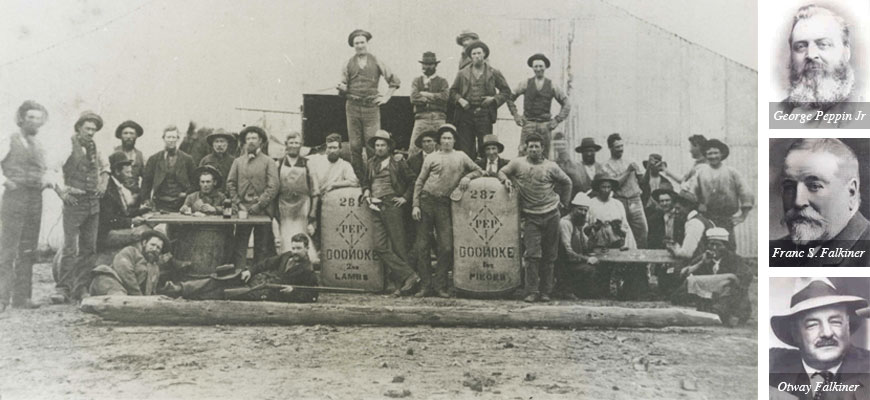| 1861 |
George Peppin, and his sons, George Junior and Frederick, established a stud flock at Wanganella Station calling in Thomas Shaw to select the ewes and advise on rams and breeding. Having been unable to sell their property, the Peppins had decided to breed a type of sheep more suitable to their environment. |
| 1873 |
The Peppin Brothers purchased Boonoke, which they restocked entirely with ewes from Wanganella. |
| 1878 |
Messrs Austin & Millear purchased Wanganella, South Boonoke and the Long Plain Run together with the 28,168 sheep, 200 cattle and horses, continuing the development of the Wanganella Stud. Mr F S Falkiner purchased North Boonoke, 26,788 sheep, 290 cattle and horses. Falkiner started the Boonoke Stud from his draft of Wanganella sheep and within a short period of time had also risen to Merino breeding fame. |
| 1895 |
Austin & Millear dissolved their partnership with Austin retaining Wanganella in the west and Millear taking the eastern half, which together with Millear’s Merino Stud was renamed Wanganella Estate. |
| 1910 |
F S Falkiner & Sons acquired Wanganella Estate and its Stud flock from the Millear family. |
| 1934 |
Otway Falkiner tested an idea he had been developing, utilising 13 ‘sports’ which had no horns from the Boonoke drop of nearly 9,000 rams. From the 13, Otway selected 8 to put over 400 Boonoke ewes the following year, thus beginning the Poll Boonoke Stud. The first offering of Poll Boonoke rams to the public was in 1937. |
| 1958 |
F S Falkiner & Sons purchased Wanganella from the Austins, re-uniting the Peppin properties and sheep under one ownership. |
| 1971 |
Cleckheaton purchased all the issued capital of F S Falkiner & Sons Pty Ltd. |
| 1978 |
News Limited acquired F S Falkiner & Sons as a whole. |
| 2000 |
Australian Food & Agriculture Company Limited purchased F S Falkiner & Sons in its entirety. |
| 2008 |
The Wanganella and Boonoke stud sheep were reunited as one flock. The AFA breeding program had targeted a specific Merino type, with the Wanganella and Boonoke Studs moving towards the desired type as distinct individual flocks, until it was felt they had reached the point where the two could mesh as one. |


